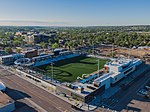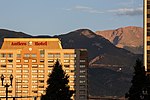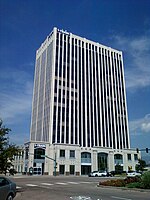Chadbourn Spanish Gospel Mission
1910 establishments in ColoradoChurches completed in 1910Churches in ColoradoChurches in Colorado Springs, ColoradoChurches in El Paso County, Colorado ... and 3 more
Churches on the National Register of Historic Places in ColoradoColorado State Register of Historic PropertiesNational Register of Historic Places in Colorado Springs, Colorado

The Chadbourn Spanish Gospel Mission is a Mission Revival building in the Conejos District of Colorado Springs, Colorado. The building is on the National Register of Historic Places.Beginning in 1928 the mission church provided religious, educational, sports, and mission services to the residents of the Conejos District. It was supported by the Colorado Springs Ministerial Association, which formed an advisory board which helped solicit and provide funding and teachers for the church. It was founded by Ruth Chadbourn, a Presbyterian nurse who had moved to Colorado Springs for her health after having served as a missionary in Costa Rica.
Excerpt from the Wikipedia article Chadbourn Spanish Gospel Mission (License: CC BY-SA 3.0, Authors, Images).Chadbourn Spanish Gospel Mission
Conejos Street, Colorado Springs
Geographical coordinates (GPS) Address Nearby Places Show on map
Geographical coordinates (GPS)
| Latitude | Longitude |
|---|---|
| N 38.828291666667 ° | E -104.83163333333 ° |
Address
Conejos Street 424
80903 Colorado Springs
Colorado, United States
Open on Google Maps











